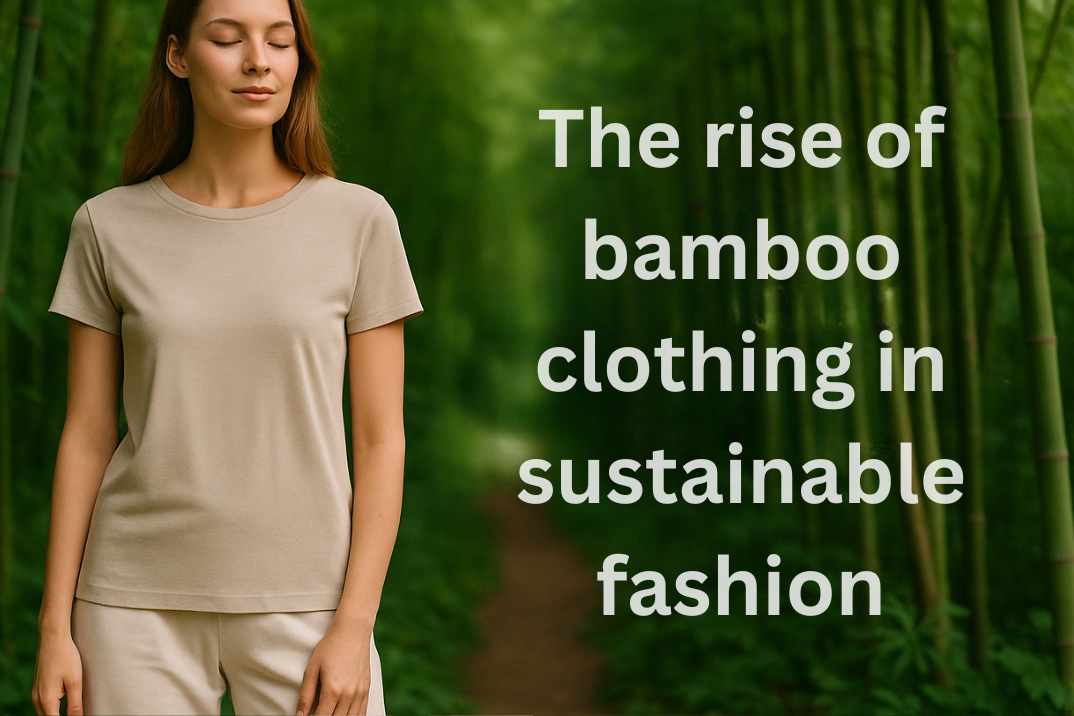
The rise of bamboo clothing in sustainable fashion
Share
The Rise of Bamboo Clothing in Sustainable Fashion
In a world increasingly aware of the environmental impact of our choices, sustainable fashion is no longer a trend but a necessity. Among the various eco-friendly materials gaining traction, bamboo stands out as a versatile and promising option. This blog post delves into the rise of bamboo clothing, exploring its benefits, production process, and why it's becoming a favorite among eco-conscious consumers.
What Makes Bamboo Clothing Sustainable?
The appeal of bamboo clothing lies in its inherent sustainability. Bamboo is one of the fastest-growing plants on Earth, requiring minimal water and no pesticides or fertilizers to thrive. This rapid growth and low-input cultivation make it a significantly more environmentally friendly alternative to conventional crops like cotton, which demands vast amounts of water and chemicals.
Furthermore, bamboo is a renewable resource. It regenerates quickly after harvesting, ensuring a continuous supply of raw material without depleting the soil or harming the ecosystem. This contrasts sharply with the environmental toll of synthetic fabrics derived from fossil fuels.
The Benefits of Bamboo Fabric
Beyond its sustainability, bamboo fabric offers a range of benefits that make it a desirable choice for clothing:
- Softness and Comfort: Bamboo fabric is incredibly soft and smooth, often compared to silk or cashmere. This luxurious feel makes it comfortable to wear against the skin.
- Breathability: Bamboo fibers are naturally breathable, allowing air to circulate and keeping you cool and dry. This makes it ideal for warm weather or active wear.
- Moisture-Wicking: Bamboo fabric excels at wicking moisture away from the body, preventing sweat buildup and keeping you feeling fresh.
- Antibacterial Properties: Bamboo possesses natural antibacterial properties, which help to inhibit the growth of odor-causing bacteria. This means bamboo clothing stays fresher for longer.
- UV Protection: Bamboo fabric offers some degree of UV protection, shielding your skin from harmful sun rays.
- Biodegradability: Bamboo fabric is biodegradable, meaning it will decompose naturally at the end of its life cycle, reducing its environmental impact.
The Bamboo Production Process
While bamboo itself is a sustainable resource, the process of turning it into fabric can vary in its environmental impact. There are two main methods:
Mechanical Processing
This method involves crushing the bamboo and using natural enzymes to break it down into fibers. These fibers are then spun into yarn. Mechanical processing is the most environmentally friendly option, as it avoids the use of harsh chemicals. The resulting fabric is often called bamboo linen or bamboo hemp.
Chemical Processing (Viscose/Rayon)
This is the more common method, where bamboo is dissolved in a chemical solution to create a pulp, which is then forced through spinnerets to create fibers. The resulting fabric is typically labeled as bamboo rayon or bamboo viscose. While this process is more efficient, it involves the use of chemicals like sodium hydroxide and carbon disulfide, which can have environmental consequences if not managed properly. However, closed-loop systems are being implemented to recycle these chemicals and minimize their impact.
Choosing Wisely: When purchasing bamboo clothing, it's important to look for certifications like Oeko-Tex Standard 100, which ensures that the fabric has been tested for harmful substances. Also, consider supporting brands that prioritize transparent and responsible production practices.
Bamboo Farming and Harvesting
Bamboo farming is a relatively low-impact agricultural practice. Bamboo plants require minimal irrigation and fertilization, and they naturally resist pests, reducing the need for harmful pesticides. The harvesting process is also sustainable, as bamboo shoots can be selectively cut without damaging the plant or its root system, allowing for continuous regrowth.

Furthermore, bamboo forests play a crucial role in carbon sequestration, absorbing carbon dioxide from the atmosphere and helping to mitigate climate change. They also contribute to soil conservation and water regulation.
The Growing Popularity of Bamboo Clothing
The demand for bamboo clothing is steadily increasing as consumers become more aware of the environmental and social impacts of their purchasing decisions. More and more brands are incorporating bamboo fabric into their collections, offering a wide range of clothing options, from t-shirts and leggings to underwear and socks.
This growing popularity is driven by a combination of factors, including the fabric's sustainability, its comfort and performance benefits, and the increasing availability of stylish and affordable bamboo clothing options.
The Future of Bamboo in Fashion
As technology advances and sustainable practices become more widespread, the future of bamboo in fashion looks promising. Innovations in processing methods are making bamboo fabric production even more environmentally friendly, and new applications for bamboo fibers are being explored.
With its unique combination of sustainability, performance, and comfort, bamboo is poised to play an increasingly important role in the evolution of sustainable fashion.
